
The nearest neighboring milky Way galaxy is Andromeda. It is significantly bigger than our galaxy and evaluations may have 2.5-5 times more stars than our milky Way. It is easy to see in the night sky from Earth. It is located in the constellation of Andromeda, thanks to which actually got its name.
The Andromeda galaxy has attracted the attention of scientists far more than a century. The first written mention of this galaxy is contained in the “Catalogue of fixed stars” of the Persian astronomer Al-Sufi (946), who described it as “little cloud”. Interest is due not only to its close neighbourhood, but also some other interesting features, which we will now discuss.
Also known as Messier 31, or M31

This is the name she received from Charles Messier, French astronomer who made it in his famous catalogue under the definition of M31. Messier catalogued many objects in the Northern hemisphere, though not all of them had been opened Messier.
In 1757, the scientist began to search of Halley’s comet, however, the calculations showed that he had the wrong coordinates. However, in the same place of observation he found nebula, the first object that he made to his directory called M1 (also known as the crab nebula). Interestingly, the first was observed by the English astronomer John Bevis in 1731. Object called M31 was in the Messier catalogue in 1767. By the end of that year, in total, the catalog was added 38 objects. By 1781 the number had increased to 103 objects, 40 of which were opened personally Messier.
Got its name from the constellation of Andromeda
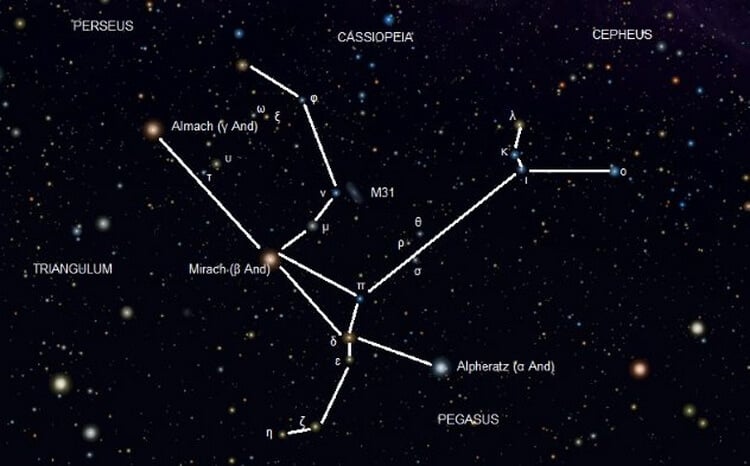
To see the constellation Andromeda in the night sky between the Great square asterism and the star α Cassiopeia (second bottom corner, if the observer sees the constellation of Cassiopeia in the form of the letter W). According to Greek mythology, the Princess Andromeda, the wife of the Greek hero Perseus, after the death turned into a constellation. The constellation was first included in the catalog of the sky Claudius Ptolemy’s Almagest. Other stars of constellations (Perseus, Cassiopeia, and Cepheus whale) also got their names after characters of this myth.
The Andromeda constellation is also home to other numerous objects. It is located outside the galactic plane and does not contain clusters or nebulae of the milky Way. However, it contains other visible galaxies. One of them is the Andromeda galaxy.
It is more of the milky Way
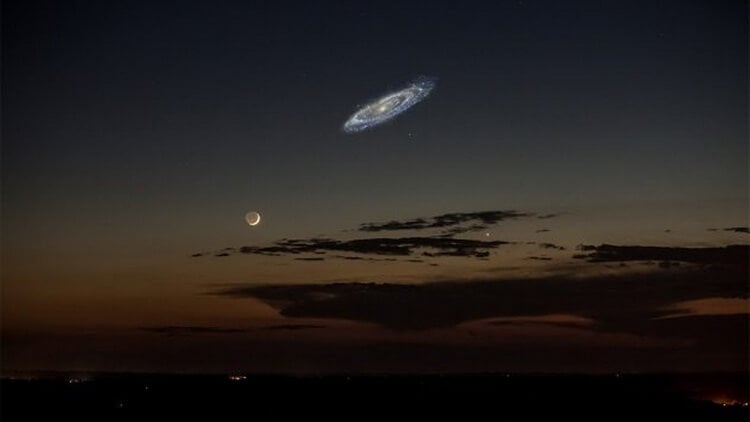
In astronomy often uses the concept of a light year, which determine the distance of certain objects, but some astronomers prefer to use the term parsec. When it comes to very large distances, we use the term kiloparsec equal to 1000 parsecs and megaparsec is equivalent to 1 million parsecs. The milky Way extends about 100,000 light-years or 30 kiloparsecs. At first glance this may seem a very large distance, but in fact, compared to other galaxies, our looks rather small.
Approximate diameter of the Andromeda galaxy is about 220,000 light years, which is more than twice the milky Way. It is the largest galaxy in the local group. If the Andromeda galaxy was brighter, the night sky, it could look larger than the moon, even though that is much, much further. By the way, about the distance: the galaxy located about 9.5 trillion kilometers from Earth (the Moon, we recall, is only 384 000 kilometers).
Andromeda
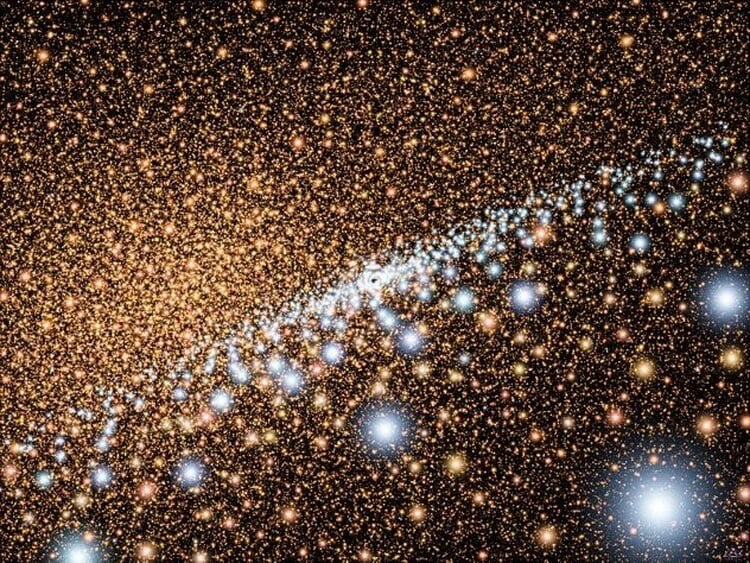
According to rough estimates, the milky Way may contain 100 to 400 billion stars. But it’s nothing compared to the Andromeda, which may contain about one trillion. Thanks to the space telescope “Hubble”, scientists learned about the existence of trillion among this very large and rare population of hot and bright stars.
Hot, young stars, and usually look blue. However, the blue star discovered in the Andromeda galaxy, seem more aging, more like the Sun, stars that have burned out your inner layers and bared its hot blue core. They are scattered around the center of the galaxy in the UV range are the brightest.
Has the dual core
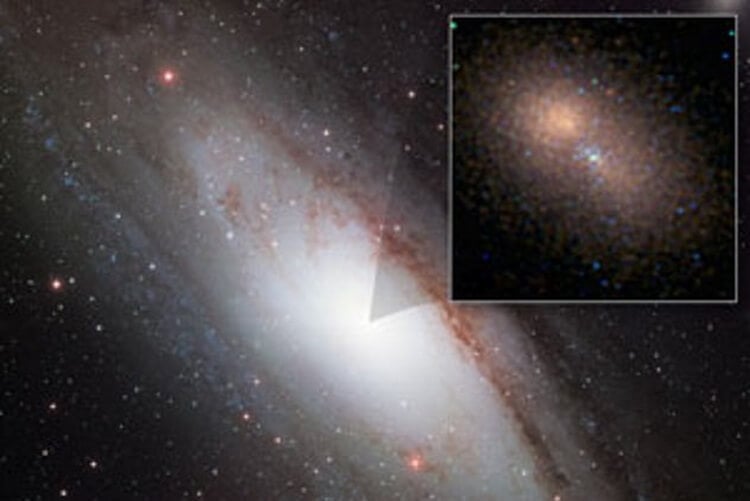
Another interesting fact about the Andromeda galaxy is the dual core. Observations have shown that in the Central part of the galaxy there are two bright object (P1 and P2) separated by a distance of only 5 light-years. Each of them consists of several million tightly located to each other the young blue stars.
Later astronomers found that the two cores are not two separate clusters of stars, but rather one cluster in the shape of a donut and a supermassive black hole, the mass of which exceeds 140 million solar masses. The stars in the cluster turn P1 very close around the black hole like planets around the Sun, thereby creating the effect of having dual core.
Will collide with our galaxy

We expect the intergalactic collapse. Currently, the Andromeda galaxy is moving towards milky Way with a velocity of 400,000 kilometres per hour. At this speed the globe you can circumnavigate in just 6 minutes. Astronomers predict that in about 3.75 billion years will collide milky Way and Andromeda. What will happen to the Land after that?
Experts believe that, despite such a major event, the Earth will still survive. Along with the rest of the Solar system. Scientists believe that our planet practically is not affected by this intergalactic collapse, since both galaxies have a lot of free space. However, from the Earth to observe the event will be very interesting (unless, of course, life by the time it will persist). Both galaxies are attracted to each other for as long as black holes in their centers, will eventually merge into one. Once that happens, our Solar system will become part of a completely different galaxy, elliptical. If the Sun will engulf the Earth in about 5 billion years, each night will be very bright, thanks to the many new stars. Instead of strings of lights of the milky Way, we will see more spheroidal light source.
Has an absolute magnitude of 3.4
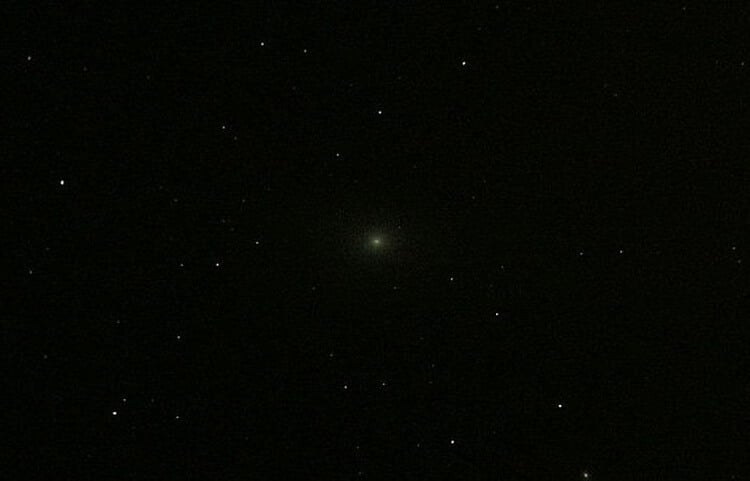
In astronomy, absolute magnitude is characterized by the luminosity of the astronomical object. It allows us to determine the brightness of any object regardless of its distance from us.
The Andromeda galaxy has an absolute magnitude of 3.4, which allows her to be the brightest object of the Messier catalogue. In the moonless night, the galaxy is visible even to the naked eye. However it is worth noting that the naked eye will only see the Central part of the galaxy. It will look like a dim star. If you look at it through binoculars, it will look like a small elliptical cloud. If you monitor it in a large telescope, it can look up to six times larger than the moon.
It is full of black holes
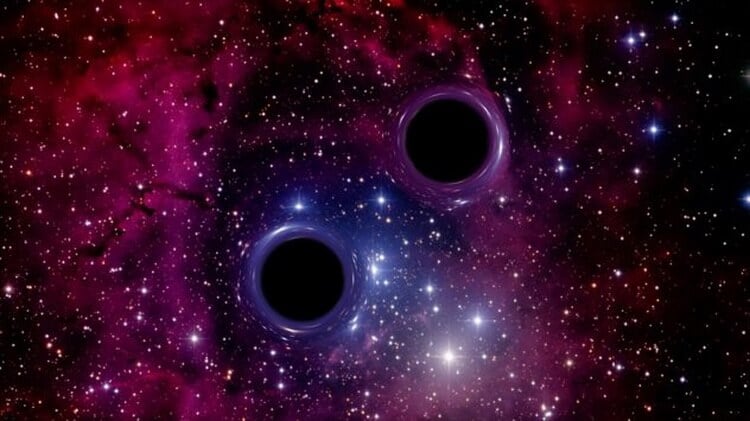
Once in Andromeda galaxy, there were 9 known black holes, but the actual number rose to 35 in 2013. Astronomers have observed around 26 candidates to be black holes that made the galaxy one of the most densely populated sites. Most of these new black holes have a mass of 5-10 times greater than the mass of our Sun. Seven black holes located at a distance of about 1000 light years from the galactic center.
Astronomers believe that in the future they will be able to find in this galaxy more such objects. For example, in 2017 it was revealed the two new black holes. It was also noted that both objects are in the most dangerous ever documented location. They are separated by a distance of 0.01 light-year, roughly equal to a couple hundred of the distances from Earth to the Sun. According to experts, these black holes can collide with each other less than 350 years, merging into a single supermassive black hole.
Contains 450 globular clusters
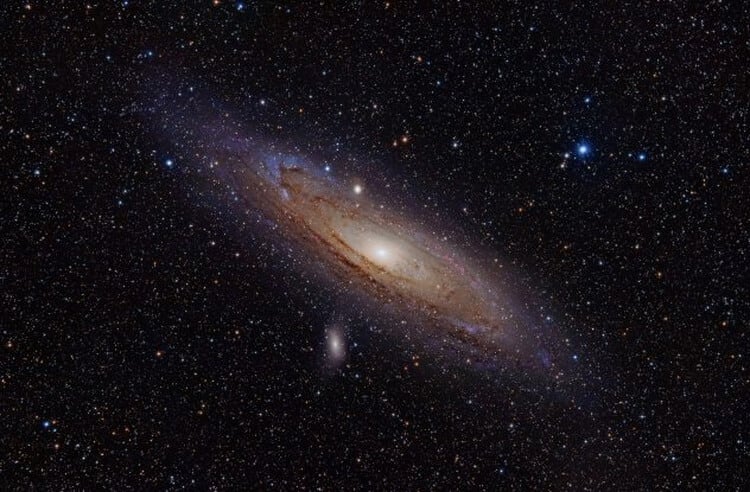
Globular clusters represent densely Packed clusters of old stars tightly bound by gravity. They may be hundreds of thousands or even millions of stars. Globular clusters help to determine the age of the Universe, and often help to determine where the center of the galaxy. In the milky Way, astronomers have found at least 200 globular clusters in Andromeda is about 450.
The number of globular clusters from the Andromeda can be much higher, however far frontiers of this galaxy are still poorly understood. If globular clusters of the Andromeda galaxy had a similar size of clusters of the milky Way, their real number could be something between 700 and 2800.
Once the Andromeda galaxy was considered a nebula
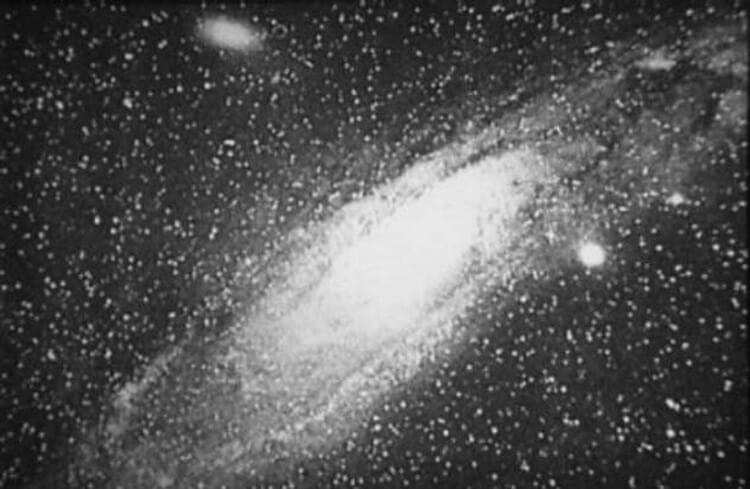
Nebulae are huge accumulations of gas, dust, hydrogen, helium and plasma, in which new stars are born. Very remote from us of a galaxy often has been mistaken for these massive clusters. In 1924, astronomer Edwin Hubble announced that the spiral nebula Andromeda is actually a galaxy and the milky Way is not the only galaxy in the Universe.
Hubble has discovered a number of stars belonging to the Andromeda galaxy, including a few Cepheids. The latter are a class of pulsating variable stars with a fairly accurate dependence of the period—luminosity. He determined how far are these stars that helped him to calculate the distance, which was the Andromeda galaxy from us. It amounted to 860 000 light years, which is more than 8 times greater than the distance to the most distant stars in the milky Way. This helped to prove that Andromeda is a galaxy and not a nebula, as was initially proposed. Later Hubble confirmed the existence of several dozen other galaxies.
10 fun facts about the Andromeda galaxy
Nikolai Khizhnyak